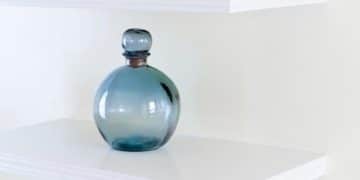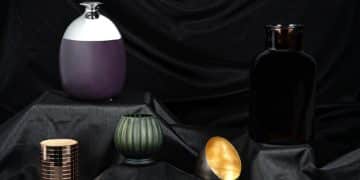Unmasking Perfume Dupes: How to Spot Fake Fragrance Reviews
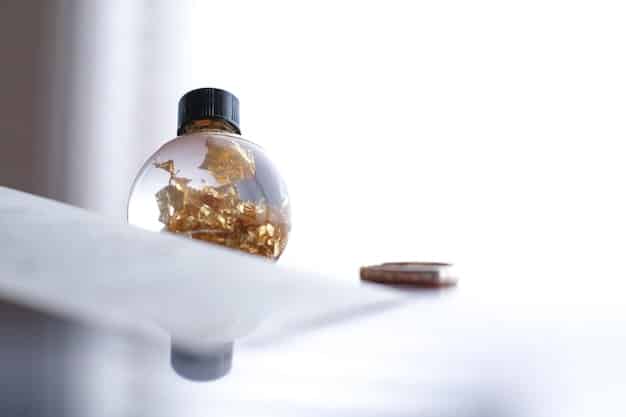
Fragrance Reviewers’ Secrets: How to Identify Fake Reviews and Avoid Counterfeit Scents involves understanding the common tactics used in deceptive reviews, verifying the reviewer’s credibility, and scrutinizing the product’s details to ensure authenticity and prevent the purchase of counterfeit fragrances.
Navigating the world of fragrances can be a delightful sensory experience, but it’s also fraught with potential pitfalls. One of the biggest challenges is discerning genuine reviews from fake ones, and understanding Fragrance Reviewers’ Secrets: How to Identify Fake Reviews and Avoid Counterfeit Scents. This is especially crucial when shopping online, where you can’t physically inspect the product before purchasing.
Why Fake Fragrance Reviews Matter
The rise of e-commerce has made it incredibly easy to buy perfumes from all over the world. However, this convenience comes with a dark side: the proliferation of fake reviews. Understanding why these reviews matter can significantly impact your purchasing decisions.
The Deceptive Nature of Fake Reviews
Fake reviews are often crafted to mislead potential buyers, either by artificially inflating the popularity of a subpar product or by discrediting legitimate competitors. These reviews can be surprisingly convincing, using persuasive language and mimicking the style of genuine customer feedback.
Financial Implications for Consumers
Purchasing a perfume based on fake reviews can lead to significant financial loss. Counterfeit fragrances often use cheaper ingredients that not only lack the complexity and longevity of the genuine product but can also cause skin irritation or allergic reactions. Therefore, relying on authentic reviews is crucial for making informed decisions.
- Misleading Information: Fake reviews distort the true quality and performance of a fragrance.
- Financial Loss: Buying counterfeit perfumes is a waste of money.
- Health Risks: Fake fragrances may contain harmful chemicals.
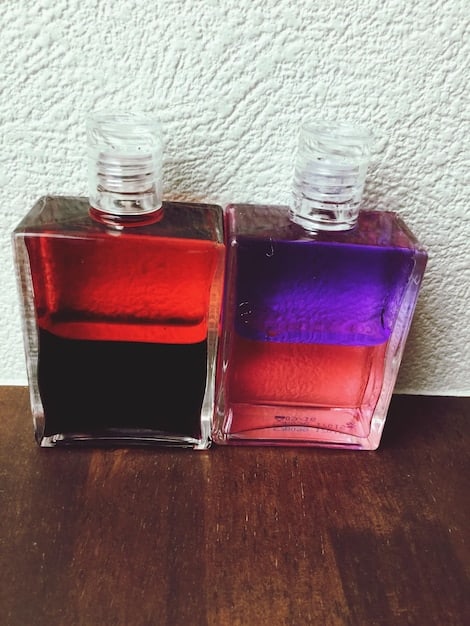
In essence, recognizing the importance of authentic reviews helps protect consumers from deception, financial loss, and potential health risks associated with counterfeit fragrances. By learning to identify fake reviews, you can make confident and informed purchasing decisions.
Red Flags in Fragrance Reviews
Identifying red flags in fragrance reviews is essential to protect yourself from being misled. Here are several indicators that a review might not be genuine.
Overly Positive or Negative Language
Be wary of reviews that are excessively enthusiastic or relentlessly critical. Genuine reviews typically offer a balanced perspective, highlighting both the strengths and weaknesses of a fragrance. Look for reviews that provide specific details and avoid vague, hyperbolic statements.
Generic or Repetitive Content
Fake reviews often lack specific details and tend to repeat the same phrases or keywords. If you notice multiple reviews using identical language or making general claims without supporting evidence, it’s a sign that they may not be authentic.
Unverified Purchase Labels
Many e-commerce platforms offer “verified purchase” labels to indicate that the reviewer has actually purchased the product. Be cautious of reviews without this label, as they may be from individuals who have not used the fragrance and are posting biased or fabricated feedback.
- Exaggerated Claims: Over-the-top praise or criticism is a red flag.
- Lack of Detail: Vague, generic reviews are often fake.
- Missing Verification: Reviews without “verified purchase” labels should be approached with caution.
By being vigilant and aware of these red flags, you can better distinguish between genuine and fake fragrance reviews, leading to more satisfying purchases and avoiding disappointment.
Analyzing Reviewer Profiles
Taking a closer look at the reviewer’s profile can also provide valuable clues about the authenticity of their feedback. Genuine reviewers typically demonstrate certain patterns of behavior and engagement that fake reviewers often lack.
Review History and Consistency
Check the reviewer’s history to see if they have reviewed a variety of products across different categories or if they primarily focus on fragrances. A diverse review history suggests a genuine consumer, while a narrow focus might indicate a biased or promotional account.
Profile Completeness and Engagement
A complete profile with a profile picture, bio, and consistent engagement is a good sign. Look for reviewers who actively respond to comments, ask questions, or provide additional insights. Fake reviewers often have minimal or nonexistent profiles.
Follower/Following Ratio
Examine the reviewer’s follower/following ratio. A large number of followers combined with minimal following may indicate that the account is either an influencer receiving complimentary products or a potentially untrustworthy account. Legitimate reviewers usually have a more balanced ratio.
By carefully analyzing reviewer profiles, you can gain a more comprehensive understanding of their credibility and make informed decisions about the reliability of their feedback.
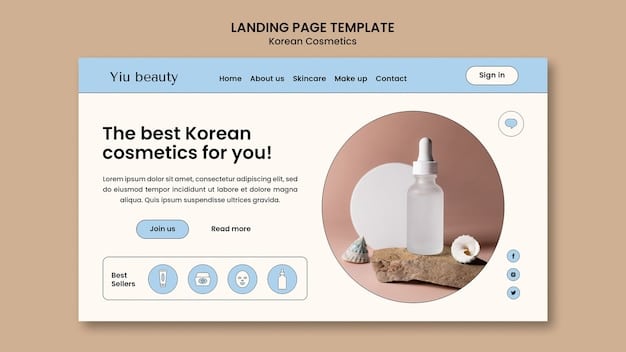
Cross-Referencing Reviews on Multiple Platforms
To get a more balanced perspective, it’s wise to cross-reference reviews on multiple platforms. This approach helps you identify any inconsistencies or patterns that might indicate fake reviews.
Comparing Reviews Across Different Websites
Check reviews on different e-commerce sites, fragrance forums, and social media platforms. If a product consistently receives glowing reviews on one site but mixed or negative reviews elsewhere, it could be a sign of manipulation.
Looking for Consistent Themes
Pay attention to the themes and sentiments expressed in reviews across different platforms. If multiple reviewers independently mention the same positive or negative aspects of a fragrance, it’s more likely to be a genuine reflection of the product’s quality.
Utilizing Specialized Fragrance Communities
Engage with specialized fragrance communities and forums, where enthusiasts often share honest and detailed reviews. These communities can provide valuable insights and help you identify potential issues with a fragrance or its reviews.
- Diverse Sources: Check multiple websites for reviews.
- Consistent Feedback: Look for recurring themes in reviews.
- Community Insights: Consult fragrance forums and communities.
Cross-referencing reviews on various platforms not only validates the authenticity of feedback but also enhances your understanding of the fragrance, ensuring a more informed and satisfying purchase.
Recognizing Counterfeit Fragrance Characteristics
Identifying counterfeit fragrance characteristics involves scrutinizing various aspects of the product, from packaging to scent, to ensure its authenticity.
Packaging Quality and Details
Examine the packaging closely for any signs of poor quality. Counterfeit perfumes often have flimsy boxes, misaligned labels, and low-resolution printing. Genuine perfumes typically feature high-quality packaging with precise detailing.
Bottle Design and Construction
Pay attention to the design and construction of the bottle. Counterfeit bottles may have imperfections such as uneven glass, poorly fitted caps, and visible seams. Authentic perfume bottles are usually crafted with precision and attention to detail.
Scent Profile and Longevity
Compare the scent profile of the fragrance to descriptions provided by the manufacturer. Counterfeit perfumes often lack the complexity and depth of genuine fragrances, with a shorter lifespan on the skin. If the scent smells “off” or fades quickly, it’s likely a fake.
Being attentive to these characteristics can help you identify counterfeit fragrances and avoid purchasing inferior or potentially harmful products.
Tools and Resources for Verifying Reviews
Leveraging tools and resources designed to verify reviews can significantly enhance your ability to identify fake feedback and make informed purchasing decisions.
Review Analysis Websites and Apps
Utilize review analysis websites and apps that employ algorithms to detect suspicious patterns in reviews. These tools can help identify fake reviews based on factors such as language, reviewer behavior, and posting frequency.
Browser Extensions for Review Verification
Install browser extensions that provide real-time review verification. These extensions flag potentially fake reviews while you browse e-commerce sites, allowing you to quickly assess the trustworthiness of the feedback.
Community-Driven Verification Platforms
Participate in community-driven verification platforms, where users collectively evaluate and rate reviews. These platforms rely on the wisdom of the crowd to identify and report fake reviews, providing a valuable resource for discerning consumers.
- Analysis Tools: Use websites and apps to detect suspicious reviews.
- Browser Extensions: Install extensions for real-time verification.
- Community Platforms: Rely on community-driven review ratings.
By incorporating these tools and resources into your review verification process, you can significantly improve your ability to identify fake feedback and make confident purchasing decisions.
| Key Point | Brief Description |
|---|---|
| 🚩 Red Flags | Watch for overly positive/negative language and generic content. |
| 🕵️ Reviewer Profiles | Check history and engagement for consistency and legitimacy. |
| 🌐 Cross-Reference | Compare reviews across multiple platforms for consensus. |
| 🔍 Counterfeit Signs | Examine packaging, bottle, and scent for authenticity. |
Frequently Asked Questions
▼
Look for red flags such as overly positive or negative language, generic content, and lack of verified purchase labels. Also, analyze the reviewer’s profile for a diverse review history and consistent engagement.
▼
Check their review history, profile completeness, and follower/following ratio. A genuine reviewer will have a diverse history and an active, complete profile rather than a solely promotional focus.
▼
Cross-referencing provides a balanced perspective, helping you identify inconsistencies or patterns that might indicate fake reviews. Compare reviews on different e-commerce sites, forums, and social media.
▼
Check packaging quality (flimsy boxes, misaligned labels), bottle design (imperfections, uneven glass), and scent profile (lacking complexity, short longevity). These indicators help discern authenticity of fragrance purchases.
▼
Utilize review analysis websites, browser extensions, and community-driven verification platforms. These tools employ algorithms and collective wisdom to identify and report fake reviews, enhancing consumer confidence.
Conclusion
In conclusion, discerning genuine fragrance reviews from fake ones requires vigilance and a multi-faceted approach. By being attentive to red flags, analyzing reviewer profiles, cross-referencing reviews on multiple platforms, and utilizing available tools, you can make informed decisions and avoid the disappointment of purchasing counterfeit scents.


